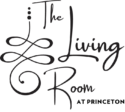Addiction is a complex, destructive condition. Drug and alcohol abuse can harm a person’s mind, body, spirit, and relationships. People living with substance use disorder (SUD) require comprehensive treatment and ongoing support to quit addictive behaviors and begin to recover.
Practicing urge surfing can help people maintain their sobriety during addiction recovery. This holistic practice involves using mindfulness-based relapse prevention (MBRP) strategies to “ride the wave” of a craving instead of giving in to it.
This article will explore urge surfing for addiction recovery. You will learn:
- What happens when people experience an urge
- What may trigger an urge
- How to use the urge surfing technique
- The benefits of urge surfing in addiction treatment and recovery
- Where to find comprehensive addiction treatment programs
If you or a loved one struggles with substance abuse or addiction, you are not alone. Contact the intake team at The Living Room to learn about our treatment programs or to schedule an intake appointment.
What is an Urge?
Many people believe that recovering from addiction only requires willpower. People may think that if they are strong enough, they can withstand cravings without relapsing.
However, willpower alone is not enough to protect sobriety in addiction recovery. Addiction is a complex condition with physical, emotional, genetic, and behavioral roots. It is not enough to just “get through” a craving. You need to make a plan to cope with them.
Surveys show that most people in recovery experience at least one relapse. It’s possible to move forward after a relapse and continue recovery. However, a relapse can be dangerous. It can also be discouraging.
What Can Trigger an Urge?
Prolonged substance abuse can change how your body and brain work. Long periods of drug and alcohol abuse essentially “rewire” the brain. The body and brain can become dependent on these substances, which can make it very challenging to quit using them when you choose.
People who quit using addictive drugs and alcohol may experience urges or cravings for weeks, months, or longer. An “urge” is basically a message from your body and brain to use drugs or alcohol again.
Many things can trigger an urge, including:
- Intense, negative emotions like fear, depression, anger, or anxiety
- Boredom or loneliness
- People, places, objects, dates, or other situations that remind you of using addictive substances
- Low self-esteem
- Guilt or shame
Urges may feel like intense physical sensations. They may present as intrusive or repetitive thoughts. People may feel anxious, agitated, or restless during a craving. Many people report feeling as though the craving will never end unless they use drugs or alcohol again.
While an urge can feel long and intense, it usually lasts only minutes or hours. Finding ways to cope with an urge can help people reduce the risk of relapse.
What is Urge Surfing?
In the 1980s, psychologist Alan Marlatt developed a technique called “urge surfing” to help people manage cravings without relapsing. Since then, dialectical behavior therapy (DBT) and other practitioners have adopted this technique to help clients improve distress tolerance.
This mindfulness-based technique encourages people to imagine a craving as a wave rising and falling. Instead of feeling anxious about a craving or losing control, people learn to recognize that cravings build, peak, and then dissolve, just like waves on the ocean.
Urge surfing work also teaches people to cultivate mindfulness skills. People can then use these skills to “ride out” an urge instead of giving in to it. Some of the mindfulness techniques people can use include:
- Focusing on one part of the body
- Focusing on your breath
- Being aware of physical sensations within the body without judgment
- Repeating a phrase or mantra
Learning to calm the body and mind can help people stay in the present moment. This allows people to get through an urge without relapsing.
How to Use Urge Surfing in Recovery
Learning how to use urge surfing can help you at every stage of your recovery journey. You may learn this skill during a comprehensive rehab program, in individual therapy, or as part of your aftercare plan.
Learning how to urge surf can give you a practical skill to use when a craving hits. You can use it when facing a known trigger and when an unexpected craving surprises you.
Urge surfing is one of many skills you can learn to manage cravings. Getting to know your triggers and having support is also essential. Reach out to The Living Room New Jersey team to learn about our comprehensive addiction treatment and recovery programs.
Get Treatment Now
If you or someone you love lives with substance abuse or addiction, you are not alone. Find comprehensive, evidence-based treatment at The Living Room. Contact our intake specialists to explore your treatment options or to schedule an intake appointment.
References:
- National Institute of Health (NIH): Surfing the urge: brief mindfulness-based intervention for college student smokers


